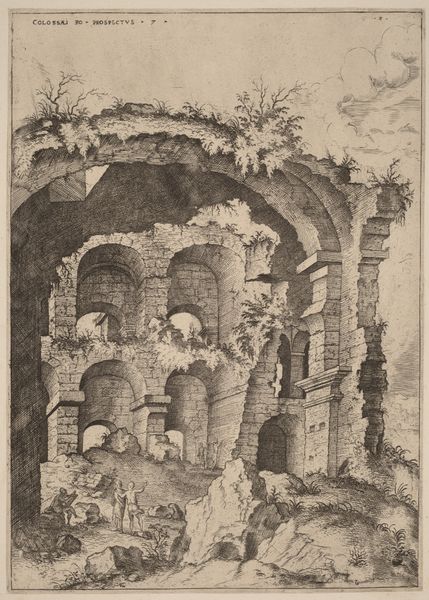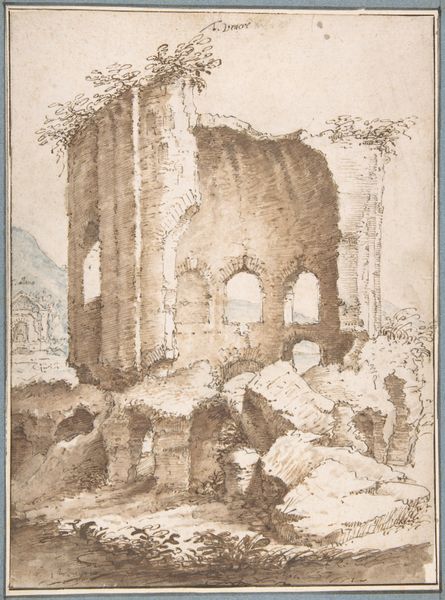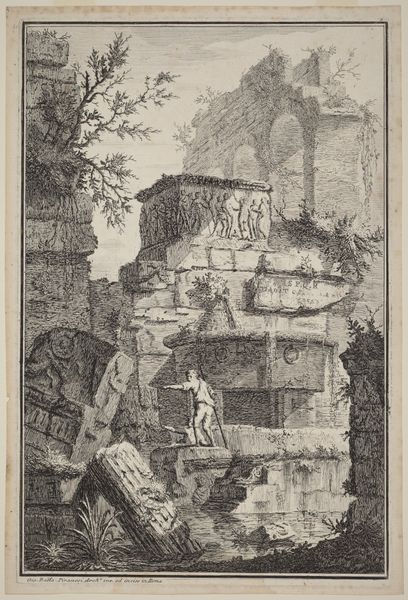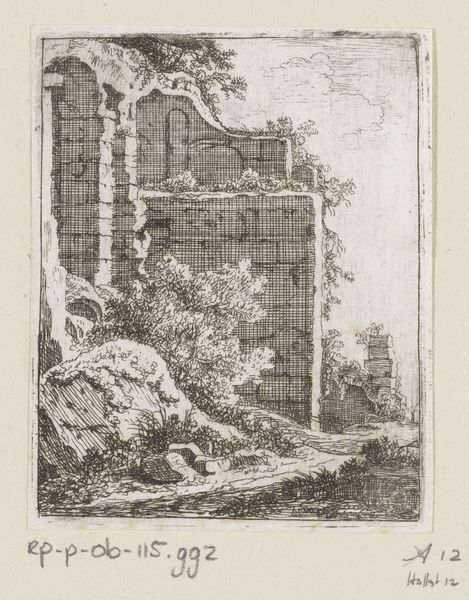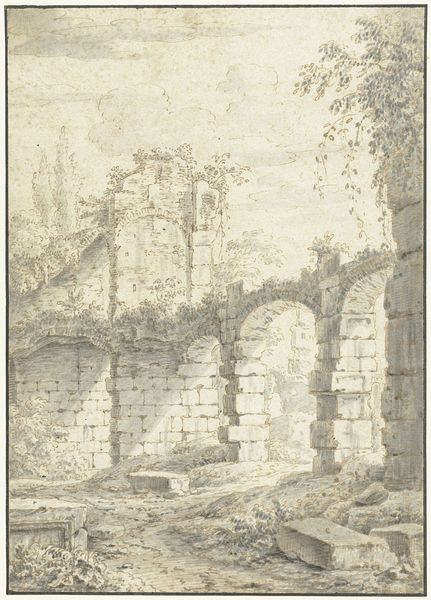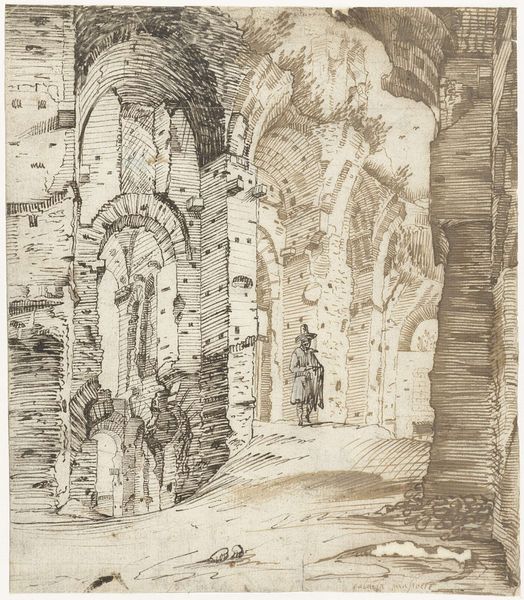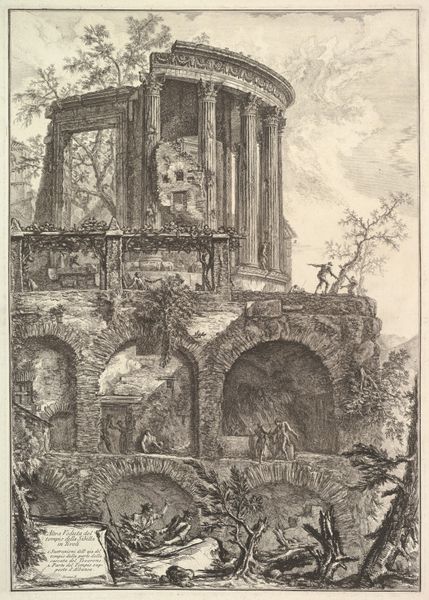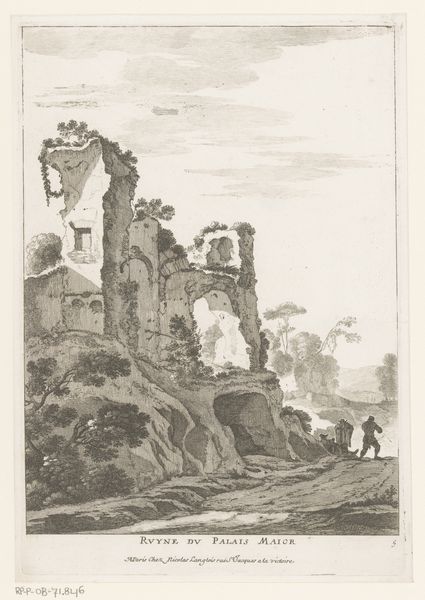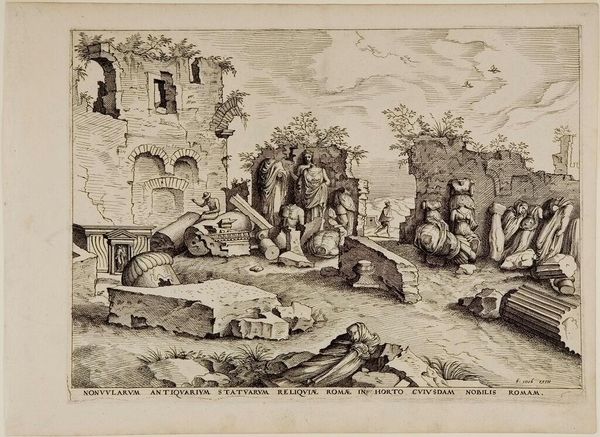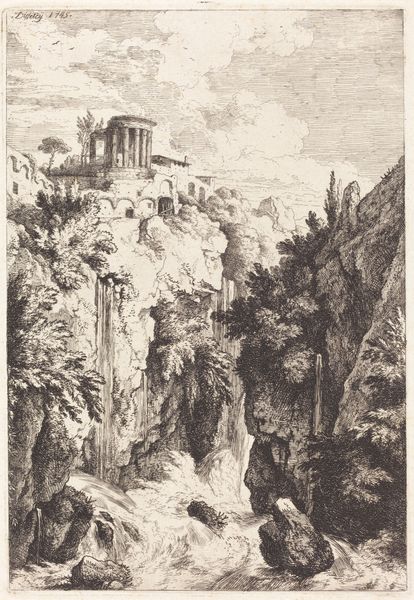
drawing, tempera, etching, paper, ink, pen
#
drawing
#
tempera
#
etching
#
landscape
#
etching
#
paper
#
romanesque
#
ink
#
pen
Dimensions: 335 × 239 mm
Copyright: Public Domain
Curator: At first glance, I am struck by the palpable sense of history emanating from this drawing, an echo of a bygone era. Editor: Indeed. This is Paul Bril’s "Temple of Vesta, Tivoli," a work rendered with pen, ink, and tempera on paper. What specifically captures your attention? Curator: Well, the Temple itself, of course. Note how Bril’s meticulous rendering captures the Doric columns, yes, but also hints at an earlier understanding of sacred sites and their connection to the land and power. Editor: Precisely. The architecture dominating the rise, evoking associations with civic duty, public gatherings. Also, the medium chosen—pen and ink drawing supplemented with washes, invites scrutiny into the actual conditions and economics of producing these landscape images as reproducible commodities. Curator: Certainly, these drawings were circulated and functioned as documents of Rome, but look at the setting too. The architectural landmark is almost overtaken by the raw, untamed, picturesque natural world that surrounds it. Note the overgrown ruins, nestled amongst a tangle of vegetation, seemingly merging built and natural forms together. This tension feels deeply resonant, symbolizing both the decay of empires and the resilience of nature’s symbolism. Editor: A fitting assessment. Think also how that sense of wildness you pinpoint relates to a consumerist hunger for unspoiled vistas and places of supposed idyllic beauty that characterized European audiences at this moment in the early modern period. It’s worth remembering the cultural work undertaken when pastoral scenery like this one was exchanged as material good. Curator: Very astute! Seeing through the lenses of production and materiality underscores the purpose and social value these artworks represent. From an iconographic viewpoint, though, it's also undeniable that the ruined Temple speaks to something far greater: a rumination on temporality and memory itself. Editor: A compelling analysis. Examining both its materiality and symbolism enriches one’s comprehension of the past, as preserved through Paul Bril's craftsmanship. Curator: Indeed. Each approach gives its unique weight and resonance.
Comments
No comments
Be the first to comment and join the conversation on the ultimate creative platform.
